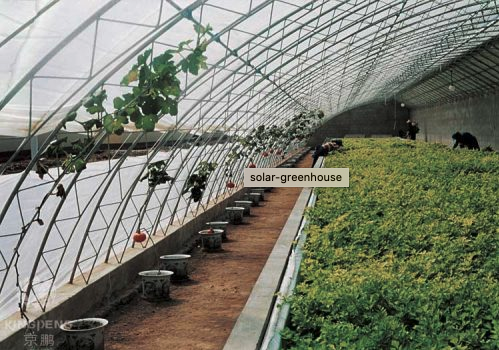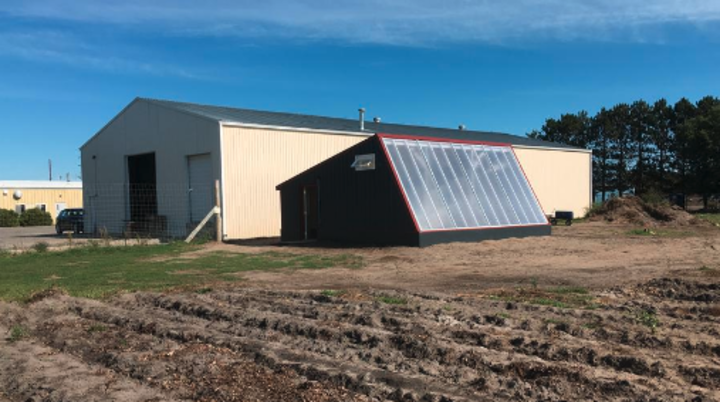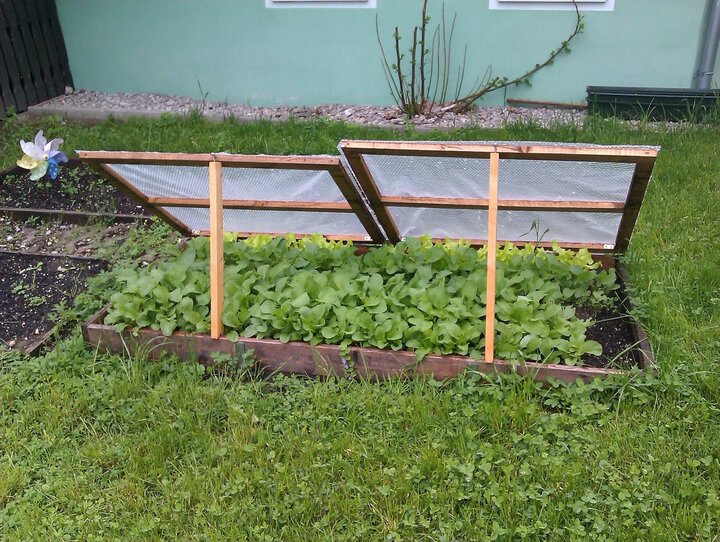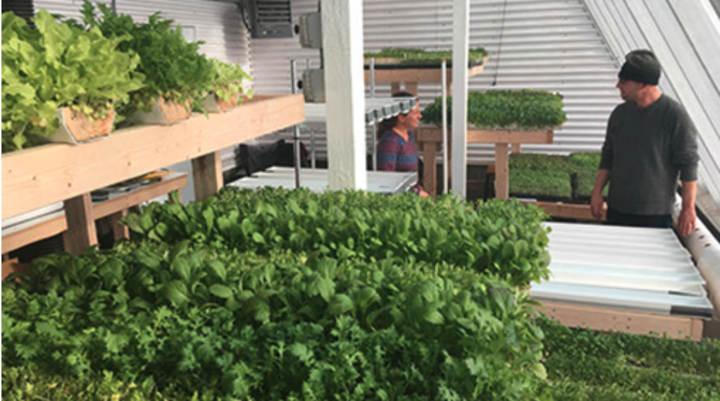Sarah Browning, Nebraska Extension Educator

Solar winter greenhouse, Image from ATTRA Sustainable Agriculture, https://attra.ncat.org/topics/greenhouses/.
Winter greenhouse production is nothing new, but rising concerns about heating with fossil fuels and their impact on climate change, have some growers looking for new ways to grow winter crops with less damage to the environment.
Let’s take a look at three techniques, both new and old, that can be used to make winter vegetable production a reality for large-scale growers and small home gardeners.

Deep Winter Greenhouse (DWG)
This type of greenhouse is designed to limit use of fossil fuel, yet still provide the heat needed to grow crops throughout winter. The greenhouse is oriented east to west and constructed with a large south-facing wall to collect solar heat. Based on the greenhouse’s latitudinal location, the south wall is constructed with a specific angle enabling it to collect the maximum amount of solar heat. The end walls and north wall are solid, non-light penetrating and insulated to prevent heat loss.
During sunny days, warm air is blown by fans into a rock bed underneath the greenhouse, where the heat is stored until it is needed. Crops suitable for winter production include those tolerant of low light and cool conditions, including salad greens, cole crops, herbs and sprouts.
But keep in mind - a deep winter greenhouse is specifically designed for cold weather winter production and is not suitable for production year-round. View the links below for more detailed information, including construction plans.

Cold Frames
Building a cold frame or hot bed are old techniques enabling gardeners and small scale vegetable growers to protect young plants from adverse weather in spring and fall, extending their growing season. With enough temperature protection, many gardeners can harvest vegetables throughout winter. Cold frames and hot beds are relatively inexpensive, simple structures.
A cold frame provides protection from wind, and cold spring or fall temperatures, moderating air temperatures by 5 to 10 degrees or more. Even though the temperature difference is small, there are times when a few degrees can prevent plant death.
It’s a great place to “harden off” seedling plants, which is very important as seedlings may be stunted if they are moved directly from the warmth and protection of a greenhouse to the garden. The cold frame provides a transition period for gradual adjustment to the outdoor weather.
Cold tolerant plants, such as Swiss chard, collards or cabbage, can be started in the cold frame and either transplanted into the garden when the weather warms, or grown to maturity within the frame. The soil in a portion of the bed can be replaced with sand, peat moss, or another suitable soil medium for starting sweet potato slips. It can also be used to overwinter semi-hardy plants, stratify seeds, start root cuttings, and force flowering bulbs.
A cold frame has no supplemental heating source; it’s passively heated by the sun. Heat is collected when the sun’s rays penetrate the sash or lid of the structure, which is made of clear plastic, glass, or fiberglass. Often the lid is a repurposed glass door or window(s).
Additional methods for passive heat storage can also be used, such as buckets or jugs painted black and filled with water that absorb heat during the day and release it at night. Other cold frames are built with a very high back and a steep sloping glass lid, insulated very well along the back and sides, and the plants covered with removable insulation at night or during extremely cold weather to provide extra protection.

Hotbeds
A hotbed differs from a cold frame only in that is has a supplemental heating source. To avoid the use of fossil fuels, heat is generated by the decomposition of organic material, such as manure, similar to what occurs in a well-constructed compost pile.
The advantage of manure as a heat source is its low cost and protection of the environment. Disadvantages include cleaning out the used manure each year, odors, the inability to precisely regulate the temperature, and the need to replace the manure each year.
For more information on deep winter greenhouses, cold frames and hot beds, visit the resources below.
- Deep Winter Greenhouse
- Cold Frames and Hot Beds
- Cold Frames, Greenhouses and High Tunnels: Choose a Growing Structure Best for You.
- Deep winter greenhouse. Image from University of Minnesota Extension.
- Simple cold frame. Image from Pixabay.com.
- Deep winter greenhouse during crop production. Image from University of Minnesota Extension.